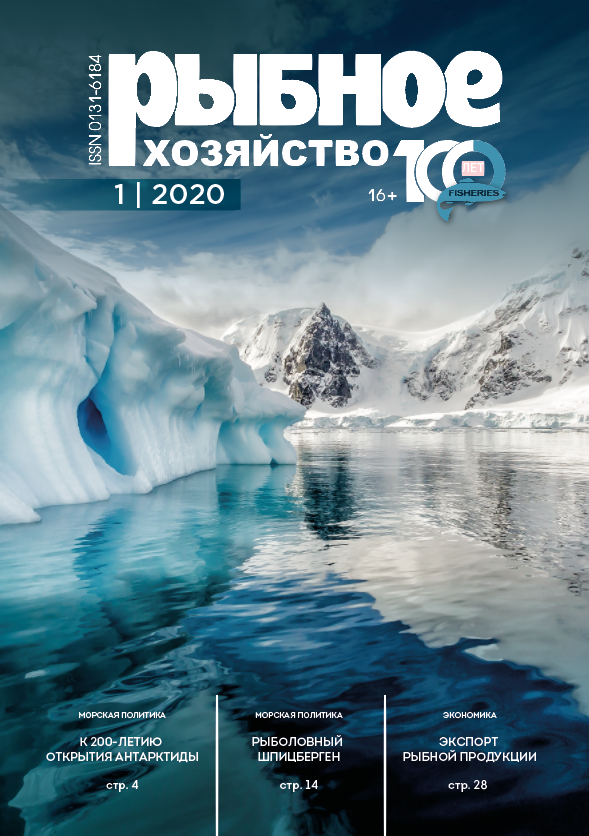Russian Federation
Moscow State University of Technologies and Management (FCU) (Leading Researcher)
Russian Federation
VAC 06.04.2001 Рыбное хозяйство и аквакультура
VAC 08.00.00 Экономика
The results of laboratory experiments on nitroglycerine toxicity detected by histological and cytological indices are presented, using Danio rerio as a case study. For the first time, there are shown the changes in liver and kidneys, both at tissular and cellular levels, induced by administered concentrations of nitroglycerine. The results obtained appear to be important for water bodies’ preservation and elaboration of MPC standards. The intake of nitroglycerine into water bodies is due, mainly, to discharge from pharmaceutical enterprises, demolition works, and outflow from explosives storehouses. Fish turned out to be sensitive to nitroglycerine as indicated by histological and hematological indices. Maximum permissible concentration, MPC, for Danio rerio is determined to be equal to 0.5 mg/l.
Danio rerio, nitroglycerine, gene toxicity, fish histological and hematological indices, maximal permitted concentrations
1. Metodicheskie ukazaniyam po ustanovleniyu ekologo-rybohozyaystvennyh normativov PDK i OBUV, (Prikaz Rosrybolovstva ot 04.08.2009 N 695 "Ob utverzhdenii Metodicheskih ukazaniy po razrabotke normativov kachestva vody vodnyh ob'ektov rybohozyaystvennogo znacheniya»), VNIRO, 2009.
2. Husserl J - Biodegradation of nitroglycerin as a growth substrate: a basis for natural attenuation and bioremediation. Ph.D. Dissertation, Georgia Institute of Technology, Atlanta, GA. 2011.
3. Oketani, Y., Mitsuzono T, Ichikawa K., Itono Y, Gojo T, Gofuku M, Nagayoshi S., and. Konoha N. - Toxicological studies on nitroglycerin //in book: Wildlife Toxicity Assessments for Chemicals of Military Concern, 1982. pp. 239-255.
4. Burton, D. T., Turley, S. D., and Peters, G. T.: Toxicity of Nitroguanidine, Nitroglycerin, Hexahydro-1,3,5-Trinitro-1,3,5-Triazine (RDX), and 2,4,6-Trinitrotoluene (TNT) to Selected Freshwater Aquatic Organisms.// University of Maryland, , Volume 76, pp 449-457, 1994.
5. Pirs E. Gistohimiya. M.: I.L. 1962. 962 s.
6. Romeys B. Mikroskopicheskaya tehnika. M.: I.L. 1954. 718 s.
7. Bardai S.K. Developmental toxicity of glyceryl trinitrate in quail embryos //Clin. Mol. Teratol. № 4: 2011.-r. 230-240.
8. Nipper M., Carr R.S, and Lotufo G.R. The release of explosives into the environment can occur during several stages of. // Aquatic Toxicology of Explosives. CRC Press. 2014, pp. 77-115.
9. Lotufo G. R - Ecotoxicity of Explosives// The available literature on the effects of explosive compounds to soil organisms. is scarce and has focused on the toxicity of TNT and its transformation.. U.S. Army Engineer Research and Development Center, Vicksburg, MS, USA. Article Outline. 2015.-109 s.
10. Kaplan, JH. Cornell, AM. Kaplan, Biodegradation of glycidol and glycidol nitrate// Appl. Environ. Microbiol. 44. 1982, rr. 144-150.
11. Simakov Yu.G. Metodicheskie rekomendacii po opredeleniyu mutagennosti veschestv pri razrabotke PDK v rybohozyaystvennyh vodoemah. - M.: VNIRO, 1997. 115 s.
12. Simakov Yu.G. Omel'chuk N.N. Vozdeystvie bihromata kaliya na eritrocity Brachydanio rerio. Innovacii i investicii. № 3, 2014. S. 239-241.











